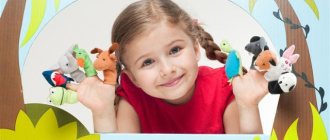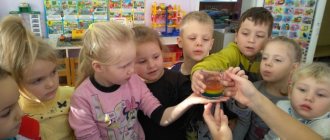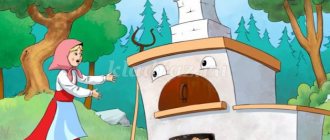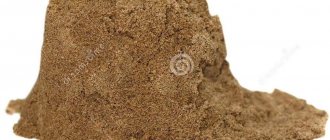Artistic and speech activities of children in kindergarten
The spiritual life of a child is complete only when he lives in the world of fairy tales, creativity, imagination, and fantasy. And without this he is a dried flower
V. Sukhomlinsky
The methodological basis for the development and implementation of the Federal State Educational Standard for Preschool Education was the Concept of Spiritual and Moral Development and Personality Education of a Russian Citizen. Art plays a major role in achieving this task. The life of a child takes place in the world of art in all its diversity and richness. Here the spiritual work of the individual takes place, and the main task is to grow and comprehend national consciousness. To do this, notes G. P. Fedotov, “we must know the history of Russia, love its heroes, appreciate monuments, know literature, the life of its peoples, their work, their art, their beliefs and way of life.” The thoughts expressed by the philosopher make us think about the ways of formation the child has national identity.
One of the important sources of development of a child’s spiritual principles is the formation of creative abilities. This is facilitated by play - dramatization, staging of literary texts, through the use of different types of theater (tabletop, finger, puppets, parsley, etc.), and then inventing your own literary works and their embodiment in theatrical games.
Creativity is an independent activity that leads to the development of artistic abilities, the formation of requests and interests. To teach creativity, it is necessary to enrich a person’s thinking with already known materials.
The formation of verbal creativity skills in children occurs on the basis of the combining action of imagination, which allows the child to use familiar images, words, and expressions. In combination, it is something new, creative, belonging to the child.
Independent artistic activity involves:
− the emergence of an artistic concept as a manifestation of the child’s interests, dictated by early motives, conditioned by experience;
− implementation of a plan, the quality of which depends on mastering the method of transferring existing experience;
− self-control of actions.
Considering a child’s verbal creativity as the initial stage of his literary development, we believe that only a well-developed skill, mastered skills of verbal creativity can in the future become the basis for elementary verbal creativity. That is why it is necessary to teach the native language to preschool children and create conditions for the development of independent artistic and speech activity.
Artistic creativity is a process of cognition and figurative reflection of reality, manifested in selection, in the enrichment of certain life phenomena in an individually unique form of their embodiment (N. A. Vetlugina)
The main conditions for the formation of artistic activity are:
− artistic training of the teacher;
− organization of a subject environment in order to create an environment for children to realize their creative ideas (mummering corner, masks, different types of theater, book corner, selected illustrations, paintings, etc.).
− training, which involves expanding knowledge about the world around us, developing skills and abilities;
− meaningful life of a child in kindergarten (holidays, entertainment, etc.).
Let us dwell on some highlighted conditions.
Training - as a pedagogical condition for the formation of artistic activity - is aimed at the child’s assimilation of experience, at the formation of methods, actions, at the development of his artistic abilities.
When familiarizing children of early preschool age with the material, the teacher’s explanatory and illustrative methods and the child’s corresponding performing and reproductive methods dominate. Later, the teacher resorts to using the explanatory-motivating method, and the child – to the independent-search method of action. (N.A. Vetlugina).
Since no single method is universal; it is necessary to combine methods that rely on children’s independent actions and methods of precise instructions and showing standards of action.
The method of precise instructions and showing standards of action is used where children need to be taught to accurately reproduce a given example. For example, it is necessary to accurately reproduce the words of the text, expressively reproduce a phrase, a word.
The method of developing methods of independent action is used where the child needs to find a method of execution, introduce a new option, control the quality of his actions with hearing, vision. Actions are independent and creative, the child can use what was shown to him earlier; following the standard, he looks for adequate techniques using self-control.
In the learning process, it is necessary to pay attention to the selection of literary material that is easily absorbed by all children and captivates them with the topic. The use of dolls in the classroom allows the child to successfully use them in independent activities. Teaching methods of independent activity ensures such activity in theatrical games and artistic activity in general. This in turn encourages self-learning and mutual assistance.
N.A. Vetlugina, L. Furmina recommend that when teaching, create a special holiday atmosphere in a group (costumes, fragments of decoration, instruments), draw up scripts for holidays, and then, together with the children, come up with your own entertainment programs and theatrical performances.
Particular attention should be paid to preparing children for independent artistic activity through working with fiction with the aim of using it in dramatization and performances. This is the main way of forming creative speech activity is revealed in modern pedagogical literature. However, practice shows that there is an urgent need to teach children creative storytelling using elements of puppeteering in order to increase the level of organization of independent artistic activity.
Using creative storytelling in teaching children, we assumed that in order to develop a high level of artistic and speech activity in preschoolers, it is necessary to develop the ability to invent stories and fairy tales. This work is mainly carried out in speech development classes. In practice and methodological writing, most often oral creative compositions are not associated with children’s theatrical games. The formation of creative imagination and thinking suggests the development of a certain level of improvisation in them, drawing up their own scripts for theatrical productions. Therefore, during creative storytelling classes, all children were taught puppeteering techniques. The characters learned to drive gradually. We started work by driving three-dimensional table theater puppets (a couple of dolls for each table, the height of the toys was from 10–20 cm, so that the child could hold them comfortably). After four or five lessons, tabletop flat toys were brought in (two per table). Children consolidated their ability to work with a toy: the figure walks, runs, speaks, and leans slightly forward or to the side. During the work, attention was paid to ensuring that while pronouncing words behind the figurine, the child moved it depending on the text. Children's training began with pronouncing one phrase for the hero in combination with the corresponding movement, then the volume of spoken text increased due to the task proposed by the teacher, and then due to the text invented by the child himself. Children were offered songs, rhymes, and text excerpts from fairy tales. This type of theater is given three to four lessons. After this there was a finger theater. The work methodology proposed for the flat theater was repeated. Attention was paid to the technique of driving the doll, the expressiveness of speech, the relationship of words and the movement of the doll. The last to be offered were the parsley theater figurines. Thus, by mastering the specifics of creative stories, the child masters the basic techniques of puppeteering and performs a creative task, which in turn ensures the formation of independent theatrical activity.
To develop your voice and articulatory apparatus, it is recommended to memorize tongue twisters. Use tasks like “the steamer is humming” or “call your girlfriends in the forest.”
It is necessary to teach children to understand the emotional state of another person and convey their own. This is helped by sketches to express attention, fear, joy, pleasure.
It is necessary to develop creative independence. Give great importance to improvisation. For example, the game “Which fairy tale will I show?” Children use pantomime to show a fairy tale without uttering a word. The game “Lullaby” is interesting, where the girls show how the mother puts the baby to sleep (they rocked them, stroked them on the head, while looking at them tenderly like a mother.”
Theatrical activity is a source of development of feelings, experiences, and introduces him to spiritual values.
With the help of a fairy tale, a child learns to distinguish between good and evil, not only in a fairy tale, but also in life. Favorite heroes become role models. But the main thing is to teach a child to survive in this complex world. To teach friendship, mutual understanding, wisdom, and the ability to get out of the current situation with dignity, that is, to find a compromise and the ability to negotiate with each other.
Speaking in front of the audience, children overcome shyness and embarrassment, learning the text, memory and thinking develop. This means that all these qualities will have a beneficial effect on the child’s educational activities at school and will help him feel confident among his peers.
Thus, theatrical activities help to develop the child comprehensively.
Knowledge of indicators of artistic activity enables practitioners to competently realize goals, analyze the artistic activity of preschool children in games and in independent artistic and speech activities.
The formation of artistic and speech abilities of preschool children goes through several stages, each of which is characterized by a certain level of development and manifestation of children’s creative abilities.
− Stage 1 – children learn to perceive and analyze literary works, their content and means of expression.
− Stage 2 - children learn to reproduce a finished literary work. For this purpose, different types of theater are used. Creative independence is manifested through the search for ways to convey expressive means for images, through mastering the technique of puppeteering.
− Stage 3 - characterized by the creation of their own skits for the theater, performance programs and preparation of performances. This is already the stage of independent creative and speech activity.
Thus, the indirect nature of leadership depends on:
a) from a conducive atmosphere (the friendly attitude of an adult, the subject environment);
b) from the presence of common elements in independent artistic speech activity and in the organization of classes, holidays, and entertainment;
c) from the development of special artistic abilities in children through specially organized training (L. V. Voroshina), which will help the teacher competently and effectively manage this type of activity;
d) from the development of the pedagogical abilities of educators, their artistic knowledge, abilities, skills, aesthetic taste and interest in artistic and speech activities.
Literature:
- Genov G.V. Theater for kids. M.: Enlightenment. 1968.
- Ermolaeva - Tomina L. B. The problem of developing children's creative abilities // Questions of psychology. 1975. No. 5.
- Karamanenko T. N. Puppet theater in kindergarten. M.: Uchpedgiz, 1960.
Summary of a lesson on speech development in the middle group “Description of fruits”
Educational area
Speech development
The topic of the lesson is “Description of fruits.”
Implementation of program content in educational areas :
“Speech development”, “Artistic and aesthetic development”, “Cognitive development”, “Social and communicative development”.
Types of children's activities:
gaming, communicative, educational and research.
Goals:
learn to compare and describe fruits.
Program tasks
:
Educational: continue learning about fruits by solving riddles; learn to describe fruits by color, shape, size; learn to use adjectives in speech, forming them from nouns.
Developing: develop, knows how to maintain a conversation, expresses his point of view, logical thinking, attention.
Educational: To cultivate a caring and loving attitude towards nature, which has generously endowed us with its riches; develop the ability to listen to each other;
Vocabulary work:
fruit, fruity, orange, lemon, cherry, plum, peach,
Preliminary work:
looking at pictures of fruits, the game “What Grows Where”, a conversation on the topic “Fruits”, “Fruit preparations”.
Materials and equipment:
Hedgehog and Little Fox, envelope, pictures of fruits, ball, sheets of paper with images of ovals and circles; two pictures of fruits to find the differences, replicas of fruits, fresh fruits.
Contents of organized children's activities
1. Organizational moment.
Educator: Good afternoon! Happy hour!
I'm very glad to see you.
You turn to each other and smile.
And sit down quietly.
Educator: Guys, who came to us? (Hedgehog and Little Fox are sitting on chairs near the board, holding an envelope)
Children: Hedgehog and little fox
Educator: Yes, these are our friends. Guys, look, they are unusual today, Hedgehog has prepared something for us in an envelope. Let's open it and read it. (Takes the envelope and opens it)
Guys, our friends invite us to play and solve riddles.
Children: stand in a semicircle and look at the board.
2. Guessing riddles. Description of fruits by color and shape.
1.Round, ruddy
It grows on a branch
Adults love him
And little children (apple)
(hang a picture of an apple on the board and the children must talk about it).
Educator: What is this? What color is the apple? What shape? What size is an apple?
Children: The apple is red, round in shape. The apple is big.
2.With orange skin,
Looks like a ball
But the center is not empty,
And juicy and tasty. (Orange)
(There is a picture of an orange on the board).
Educator: What is this? What color is the orange? What shape? What size? Do you think an orange is sweet or sour?
Children: Orange, round in shape...
3.It's almost like an orange
Thick skinned, juicy,
There is only one drawback -
Very, very sour (lemon)
(there is a picture of a lemon on the board).
Educator: What is this? What color is lemon? What shape is it? What size is a lemon?
Children: answer questions
4.Blue uniform, white lining,
It's sweet in the middle. (Plum.)
(on the board there is a picture of a plum).
Educator: What is this? What color is plum? What shape? What size is the plum?
Children: answer questions
5. A whole herd of horses on one leash. (Grape.)
Educator: What is this? What color are grapes? What shape? What size are the grapes?
Children: answer questions
Educator: I’m sitting on a tree, round like a ball,
Red as blood, sweet as honey. (Cherry.)
Educator: What is this? What color are cherries? What shape? What size is the cherry?
Children: Cherry is red, round in shape. Small cherry.
Educator: Well done, guys. All the riddles were solved.
Educator: Guys, how can you call an apple, orange, lemon in one word? What is this? Children: fruit.
Educator: Guys, where do fruits grow?
Children: in the trees
Educator: What are the names of the trees on which fruits grow?
Children: fruit
Educator: Where do fruit trees grow?
Children: in the garden.
Educator: What is the name of a garden in which there are many fruit trees?
Children: orchard
Educator: Well done! The Hedgehog and the Little Fox are also happy with you.
Physical school
Educator: Let's rest a little. Leave the tables and come to me. Stand in a circle. And we will put the Hedgehog and the Little Fox in the center of the circle.
Children: Go out to the teacher’s carpet and stand in a circle.
“Yesterday we walked in the garden, They walk in a circle, holding hands.
We planted currants. They depict how they dig a hole and plant a bush in it.
We whitened the apple tree with lime and whitewash. Move your right hand up and down.
We fixed the fence. Simulates hitting with a hammer.
We started a conversation: They stand facing in a circle
- Tell me, our gardener,
What will you give us as a reward? One finger is bent for each name.
I will give you lilac plums and honey pears as a reward,
The largest ripe apples, They stretch their hands forward.
A whole kilogram of cherries
This is what I will give you as a reward.
A whole kilogram of cherries, that's what I'll give you as a reward.
3. Game “Which one? Which?".
Educator: And now we will sit down on the palace. The Hedgehog and the Little Fox will roll the ball for you and name the color and object in the singular,
for example, a yellow pear, but you have to say how it will be in the plural - yellow pears ..
Educator on behalf of the Hedgehog and the Little Fox: orange orange
Child: orange oranges
4. Coloring.
Teacher: gives each child a sheet of paper on which ovals and circles are depicted.
Children: according to the teacher’s instructions, paint the figures, then determine what the painted figure looks like.
Instructions: Color the shape in the first lower right corner green (apple)
;
in the upper left corner - yellow (lemon)
, in the middle - orange
(orange).
5. Game " Treats ".
Educator: Guys, but E. and L. don’t know why people grow so many fruits. After all, if you don’t eat them all at once, what will they do?
Children: they will spoil, they will not taste good
Educator: Let's tell our friends how to store fruit.
Children: boil, dry, freeze
Educator: What can you cook from fruits?
Children: jam, compote, juice, marmalade
Educator: I am the presenter, I give you a piece of fruit and ask: “What kind of orange juice?”
Child: orange
Educator: “What kind of peach juice?”
Child: peach
Educator: “What kind of apple juice?”
Child: apple
Educator: “What kind of pear juice?”, “What kind of banana juice?”, “What kind of lemon juice?” (you need to play with each child)).
6. Comparison of images.
Teacher: shows a picture on the board
Children compare two pictures, find and name the differences.
7. Game “Forgetful buyer”.
A “seller” and a “buyer” are selected. Models or pictures of fruits are laid out on the table. The “buyer” says that he forgot the name of the item he wants to buy. The “seller” asks to describe the item: color, shape, taste, what it feels like, what it’s like inside. Based on the description, the “seller” guesses the fruit that the “buyer” wants to buy.
8. Reflection. Game "Define the taste."
Educator: Hedgehog and Little Fox brought us treats. Now you and I will put blindfolds on our eyes, go up to the table and taste what kind of fruit it is? Well, the Hedgehog and the Little Fox will see if you complete the task correctly or not. Children: close their eyes and take the prepared fruits into their mouths and guess what they ate.
Educator: Well done! It's time for the Hedgehog and the Little Fox to return to the forest, let's say goodbye to them. Goodbye, guys..
Children: Goodbye





